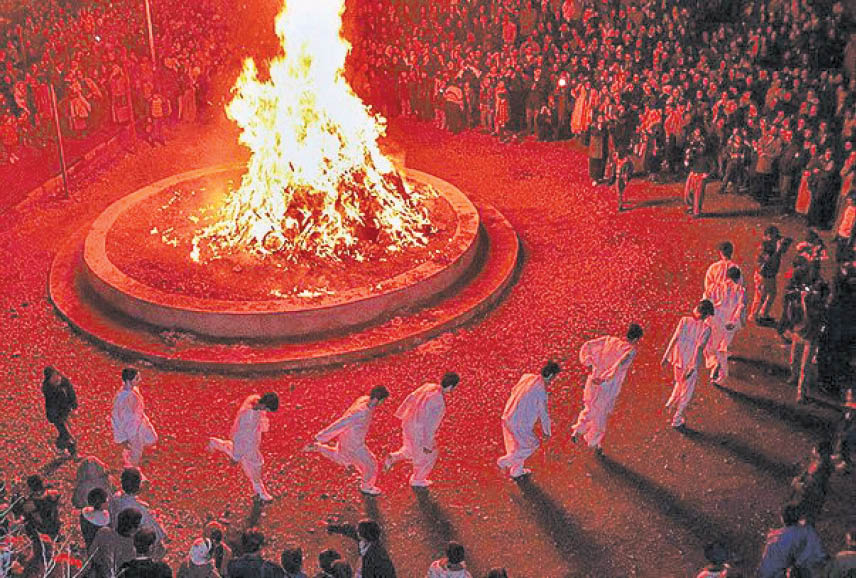 On 30th January, 2023, Iranian Zoroastrians gathered in numbers to celebrate the importance of light, fire, and energy in a traditional mid-winter festival, passed down from generation to generation for millennia, namely Jashn-e-Sadeh. The festivity is celebrated among Zoroastrians mainly in Tehran, Yazd, Shiraz and Kerman. This year the event was tied to the uprising that has been ongoing since mid-September, last year, when 22-year-old Mahsa Amini was killed in custody of the hijab police.
On 30th January, 2023, Iranian Zoroastrians gathered in numbers to celebrate the importance of light, fire, and energy in a traditional mid-winter festival, passed down from generation to generation for millennia, namely Jashn-e-Sadeh. The festivity is celebrated among Zoroastrians mainly in Tehran, Yazd, Shiraz and Kerman. This year the event was tied to the uprising that has been ongoing since mid-September, last year, when 22-year-old Mahsa Amini was killed in custody of the hijab police.
In the past two weeks, grassroot groups had called for gatherings on the occasion of Sadeh festival that has its roots in Zoroastrianism and dates back to before the Achaemenid Empire for at least 3 millennia. The mid-winter festival was celebrated with grandeur and magnificence in ancient Persia to honor fire and to defeat the forces of darkness, frost, and cold. Iranians used the symbolism to protest against the oppressions of the clerical regime.
The occasion, which is named after the number 100 (Sad in Farsi), occurs 50 days and 50 nights before Noruz, the start of the Iranian calendar year, on March 21. As per legend, the feast commemorates the fictitious discovery of fire. When the action reaches its peak, a sizable pile of wood is lit on fire. In order to preserve the revered festival, Jashn-e-Sadeh was added to Iran’s National Intangible Cultural Heritage list, in May 2020.
Some believe that Sadeh is an occasion to celebrate fire and thwart the forces of coldness, ice and darkness. However, the festival is linked to the beginnings of humans in numerous mythological stories. Houshang, the second king of the world in Persian mythology, is said to have discovered fire while attempting to strike a dragon with a stone. As per folklore, he threw a flintstone, which on striking another flintstone, produced a spark and started a fire.
Some Zoroastrian priests (Mobeds) recite verses from the Avesta, before starting the enormous open fire. As a mark of cleanliness and orderliness, the priests are always attired in white cotton robes, trousers, and hats. In addition, Mobeds and Zoroastrian girls and boys, all dressed in white and carrying torches, circle the cluster of shrubs, as the cheers of the crowd intensify when they light the fire.
- જેજે હોસ્પિટલના પારસી વોર્ડમાં નવરોઝની ઉજવણી - 5 April2025
- ઝોરોસ્ટ્રિયન વિમેન્સ એસોસિએશન ઓફ સુરત દ્વારા પાણી બચાવો પર્ફોર્મન્સ - 5 April2025
- આવાં યઝદના પરબની ઉજવણી - 5 April2025
